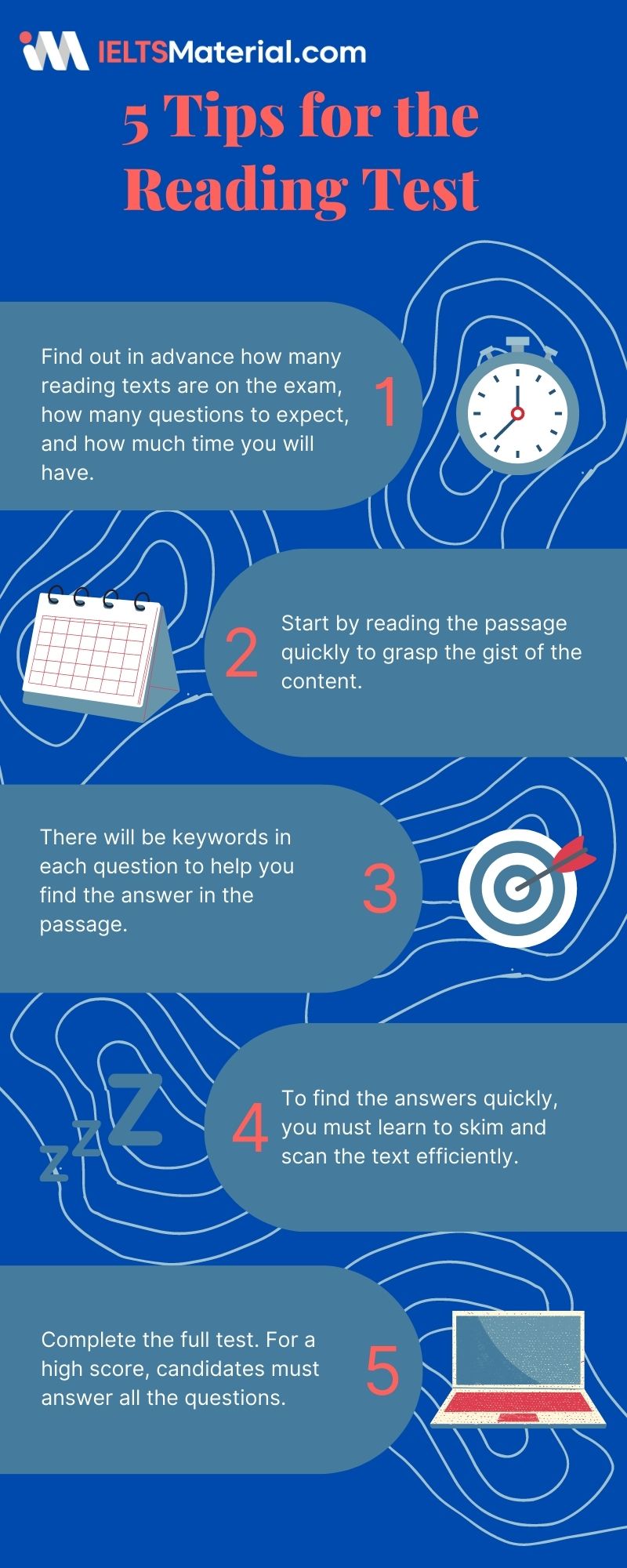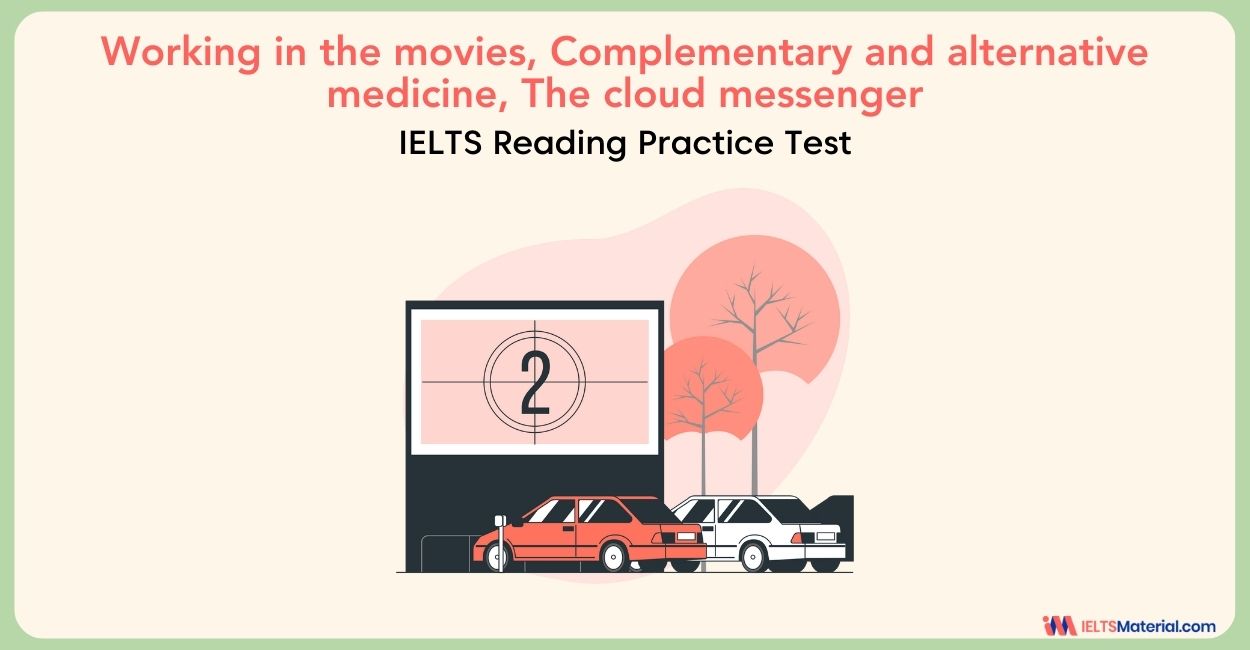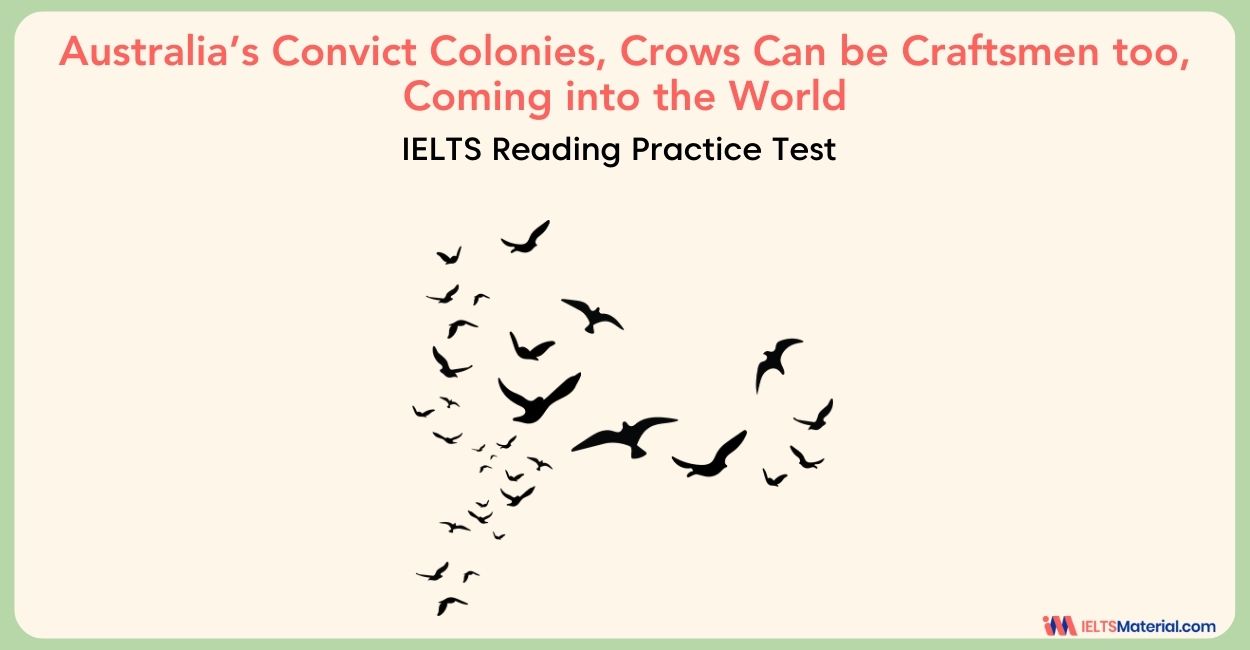In or Out?, Tyes and Greens, Deafhood Reading Answers
Table of Contents
Limited-Time Offer : Access a FREE 10-Day IELTS Study Plan!
The IELTS Reading passage, In or Out?, along with the other two Academic passages – Tyes and Greens and Deafhood, make this a complete Reading practice test.
You will have 60 minutes to complete the whole test, which consists of 40 questions in total. We at IELTSMaterial.com would urge you to time this test as in the real exam and find the answers without looking at the key.
Do you want webinar updates to improve your Reading skills? Click here to find out the details for the upcoming events.
Now, set your timer and get ready to take the test!

Check the answer key with explanations of ‘In or Out?’ below and unlock the answer key for other passages by signing up.
If you have scored 40/40, then we wish you all the best. If you haven’t, then we would earnestly advise you to take one of our IELTS reading practice tests.
Reading Passage 1
You should spend about 20 minutes on Questions 1-14 which are based on Reading Passage 1.
Questions 1 – 3
Look at the following dates (Questions 1-3) and key events in the development of further education below.
Match each date with a key event.
Write the correct letters A-G in boxes 1-3 on your answer sheet.
1 1991
2 1993
3 1994
Key Events
A Severe penalties for drop-out are developed as part of college funding mechanisms.
B Serious attempts are made to improve student support
C An influential report showing that non-completion rates are significantly high is published.
E The lack of a strategical basis is officially recognized.
E The HTML is created.
F Data on student completion rates for further education are published.
G A minor report showing that non-completion rates are significantly high is published.
Questions 4-8
Complete the sentences below with words taken from Reading Passage 1.
Use NO MORE THAN THREE WORDS for each answer.
Write your answers in blank spaces 4-8 on your answer sheet.
4 Further education colleges in Britain were originally not worried about student drop-out, because students did not leave college for fear of………………….
5 According to the writer, the philosophy at further education colleges was………………
6 As people became more aware of equal opportunities, colleges encouraged students from under-represented groups, as a move to……………….
7 The HMI‘s report focused on completion rates, based on……………of reasons for students’ departure from college.
8 In the early 19905, the political situation, both in Britain and the US, demanded a major……………….
Questions 9 – 14
Choose the correct letter, A, B, C or D.
Write your answers next to 9-14 on your answer sheet.
9 The report Unfinished Business
A pointed out the politics of the time.
B gave £500 million to the state,
C linked drop-out to wasting money.
D turned the spotlight.
10 The new series of principles developed in 1994 by the FEFC
A gave money to each student,
B was quasi-independent
C meant colleges had to turn their immediate attention to improving student retention rates.
D was aimed at improving teacher retention rates
11 Attempts to reduce the student drop-out rate were hindered, because
A there was a lack of research data upon which to base strategies.
B colleges did not know what to do.
C computers in colleges were slow.
D colleges had no patterns.
12 Further hindrances in reducing the student drop-out rate were
A colleges’ slowness in computerizing data and not knowing their retention rates, nor what patterns of retention existed.
B college inertia and administrative incompetence.
C computer glitches and strikes, which occurred at most colleges.
D Colleges’ strategies to deal with the problem of low retention.
13 Colleges’ strategies to deal with the problem of low retention …
A brought administrative and academic staff together
B varied enormously
C jumped
D was based on something other than data
14 The main strategies to improve retention included
A ‘best fit’ supporting activities.
B activities to support and transform the student.
C the raising of college expectations.
D a summary by Martinez.
Want to practise more MCQs? Check out the video with some insider IELTS Reading MCQ Tips and Tricks
Also check:
- IELTS Reading
- Tips to Improve IELTS Reading Skills
- IELTS Academic Reading Practice test
- IELTS past paper pdf
Reading Passage 2
You should spend about 20 minutes on Questions 15-28 which are based on Reading Passage 2.
Questions 15 – 18
Choose the correct letter, A, B, C or D.
Write your answers next to 15-18 on your answer sheet.
15 A tye was
A a green.
B a large open area.
C common land with trees.
D found at the junction of two or more routes.
16 The Pebmarsh area
A probably had seven tyes.
B probably had six tyes.
C appears to have had five or six tyes.
D was not in East Anglia.
17 The tyes in the Pebmarsh area were
A near the river.
B used by medieval freemen.
C mostly at the margins of the parish.
D owned by Earls Colne Priory.
18 According to the writer, wealthy landowners
A did not find the sight of forest land attractive.
B found the sight of forest land attractive.
C were attracted by the sight of forest land.
D considered forest land unproductive.
Questions 19 – 28
Complete the table below.
Choose NO MORE THAN THREE WORDS from the passage for each answer.
Write your answers in blank spaces next to 19-28 on your answer sheet.
| 13805 | John Hayle who is documented apparently gave his name to Hayles Tye |
| 15005 | The name of Hayles Tye was still 19……. and 20……… again in the following two centuries in relation to taxes. |
| 18th Century | Hayles Tye was renamed 21……….; the original dwellings may either have disappeared or were 22…………… |
| 1817 | Charles Townsend of Ferriers Farm 23………….. Files Green. |
| 1821 | At File’s Green, Charles Townsend built 24………. cottages, which housed families employed as 25…………
The chimney structure and the 26………. appear to pre-date the cottages. |
| 1933 | The cottage now called File’s Green Cottage was bought by the local 27………… manager who convened the cottage into 28………… |
Reading Passage 3
You should spend about 20 minutes on Questions 29-40 which are based on Reading Passage 3.
Questions 29-35
Reading Passage 3 has eight paragraphs A-H
From the list of headings below choose the most suitable heading for each paragraph.
Write the appropriate numbers i-xiii in boxes 29-35 on your answer sheet
List of Headings
| i | Social Solutions |
| ii | The law backs noise |
| iii | Some practical solutions |
| iv | The beautiful countryside |
| v | Noise from mobiles |
| vi | Neighbour noise |
| vii | Noisy travellers |
| viii | Noise to entertain you |
| ix | Noisy restaurants |
| x | The law and noise |
| xi | Rural peace shattered |
| xii | A quiet evening at the restaurant |
| xiii | Noise on the increase |
| Example Answer
Paragraph A xiii |
29 Paragraph B
30 Paragraph C
31 Paragraph D
32 Paragraph E
33 Paragraph F
34 Paragraph G
35 Paragraph H
Questions 36 – 39
Look at the following areas where noise is a problem (Questions 36-39) and the list of solutions for noise problems below.
Match each area with the correct solution.
Write the correct letter A-K in boxes 36-39 on your answer sheet.
36 Trains
37 Restaurants
38 Homes
39 Living in a rural setting
List of Solutions |
|
| A
B C D E F G H I J K |
People should be sent to prison.
More sophisticated sound systems are needed. Sofa furnishings are needed. People should stay at home. Sound-proofing materials should be used. Music should be turned down. The noise laws should be relaxed. Shops should have restricted opening hours. Trains should be sound-proofed. More noise-free carriages should be introduced on trains. Visitors should take industrial ear-muffs with them. |
Question 40
Choose the correct letter, A, B, C, D or E.
Write your answers next to 40 on your answer sheet.
40 Which of the following is the most suitable title for Reading Passage 3?
A The legal impact of increased noise
B Societal noise: problems and solutions
C A call for increased noise tolerance within neighbourhoods
D Deafness: a by-product of modern society
E Neighbourhood sounds on the increase
Answers
In or Out? Reading Answers (Passage 1)
| 1. | F
The answer is in paragraph 3. The answer is not E, because there is no mention of when the HMI was created. |
| 2. | C
The answer is in the fourth paragraph. Note that G is not possible, because the passage says the report was seminal. i.e. important/ influential. |
| 3. | A
The answer is in paragraph 4. |
| 4. | endangering their job
The answer is in the first paragraph. The sentence is a paraphrase of the first sentence of the text. |
| 5. | (mainly) liberal
The answer is at the beginning of the last sentence of the first paragraph. |
| 6. | widening participation OR widen participation
The answer is in the second paragraph. Note that the gerund can be changed to the infinitive. |
| 7. | academic staff’s explanations
The answer is in the second sentence of the third paragraph. |
| 8. | taxation reduction OR tax reduction
The answer is in the first sentence of the fourth paragraph. |
| 9. | C
The answer is in the fourth paragraph. A is incorrect, as this was not what the report did. B is not right, as the report did not give them money, and D is incomplete. |
| 10. | C
The answer is in paragraph 4. A. is not right, because the money is not given to the student (it is given to the college for the student). B. is incorrect because it was a further education that became quasi-independent, not the principles, and D. is not possible, as the text does not say this. |
| 11. | A
The answer can be found in the first sentence of the fifth paragraph. The phrase to reduce the student drop-out rate is a paraphrase of to improve retention. It is important to look out for way’s in which sections of the text are paraphrased in the various types of questions. B, C and D are incorrect because all three contain phrases lifted from the text, but used here in the wrong context. |
| 12. | A
The answer can be found in the second sentence of the fifth paragraph. Note that the sentence gives three complexities, which hinder the reducing of drop-out rates. B is not mentioned in the text, nor is C. The first element of D is correct, but the second one is nonsensical. |
| 13. | D
The answer is in the second half of the fifth paragraph. The last sentence gives the answer, i.e. something other than data. A and B are not stated, and C is incomplete. |
Unlock Answer
Signup/Login and get access to the answers
Tyes and Greens Reading Answers (Passage 2)
| 14. | B
The answer is in the final paragraph and is a summary of the examples given. A is a phrase lifted from the text and is past of two ideas – note the comma in the text. C is incorrect because the passage refers to raising the students’ expectations, not those of the college. D is not correct, because Martinez outlined the strategies, so Martinez’s summary included the strategies, and not the other way round. |
| 15. | A
The answer is in paragraph 1. A tye is not large, so B is not correct. We do not know if there were trees, so C is correct. And D was not always the case. |
| 16. | C
The answer is in the first sentence of the second paragraph. The answer is not A or B, because the text does indicate any degree of possibility/probability, nor does it state a specific number. D is obviously wrong. |
| 17. | C
The answer is in paragraph 2, in the first sentence: … all except one at the margins of the parish. A is not one – see the second sentence of the paragraph. B. is ‘likely՛, but the answer is not categorically given. D is incorrect, because most not all, of the land was owned by the Priory. |
| 18. | D
The answer is in paragraph 2. Note the tense: … would, in any case, have been unattractive…, indicating what a writer interprets as having happened. Note that the word unattractive here does not mean visually. It means that they would have liked it because it was not producing anything. So A and B are wrong because they talk about sight, C is obviously wrong. |
| 19. | in use
This is in the second sentence of paragraph 3. |
| 20. | crops up
The answer is in the second sentence of paragraph 3. Note the different tenses and the verb forms here. You can change the present simple crops up into the gerund and you can use the simple tense. They all fit the grammar of the text in the exercise. |
| 21. | File’s Green
The answer is in the third sentence of paragraph 3. |
| 22. | abandoned OR burnt down
The answers are at the end of paragraph 3. Both answers are correct. |
| 23. | owned
The answer is in the first sentence of paragraph 4. |
| 24. | two OR two brick
The answer is in the first sentence of paragraph 4. |
| 25. | agricultural labourers
The answer is in the first sentence of paragraph 4. |
| 26. | fireplaces
The answer is in the 4th paragraph. The fireplaces themselves and the chimney structure appear to be older (pre-date) the 1821 cottages. |
| 27. | gravel works
The answer is in the last paragraph. Note this phrase is an adjective here. Note that you cannot add the word newly-opened. In the reading passage, the word describes the word works, but in the exercise, it would describe the word manager |
| 28. | one dwelling
The answer is in the last paragraph. Note that there were two cottages. Each cottage had two families, i.e. two dwellings. One cottage was destroyed leaving one cottage with two dwellings, which the manager converted into a cottage with one dwelling. Note you cannot have the word one on its own. |
Passage 3
| 29. | vii |
| 30. | vi |
| 31. | xi Heading iv is not suitable as it does not really talk about the countryside, but the noise there. Nor is there any mention of beauty. |
| 32. | viii
Heading ix is not suitable as the paragraph does not just talk about restaurants. |
| 33. | x |
| 34. | iii |
| 35. | i |
| 36. | j The answer is at the end of paragraph B. |
| 37. | C
The answer is in paragraph c. Restaurants are talked about in paragraph E, but the solution is given in the paragraph. |
| 38. | E
The answer is in paragraph c in the second sentence. |
| 39. | K
The answer is in paragraph D. |
| 40. | B
Although A, C, D and E are all mentioned in the text, they are only dealt with to a lesser degree than E. B is the best answer as the whole passage details several problems that occur in society and concludes with some suggestions for solving the problem of noise in society. |
Practice IELTS Reading based on question types
Start Preparing for IELTS: Get Your 10-Day Study Plan Today!
Explore other Reading Practice Tests

Nehasri Ravishenbagam

Recent Articles

Kasturika Samanta

Kasturika Samanta

Janice Thompson





Post your Comments
2 Comments